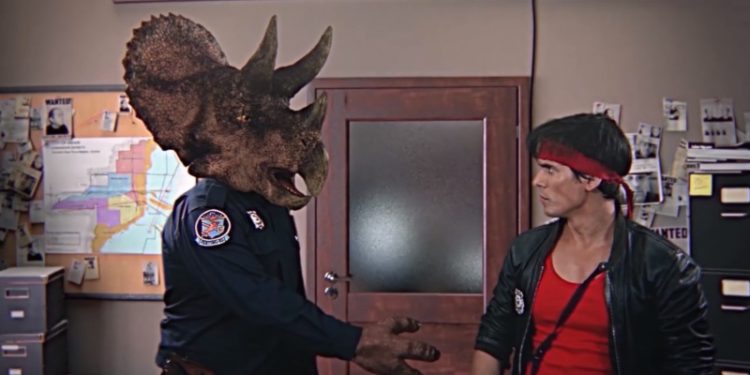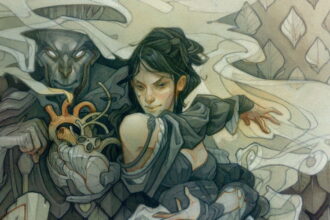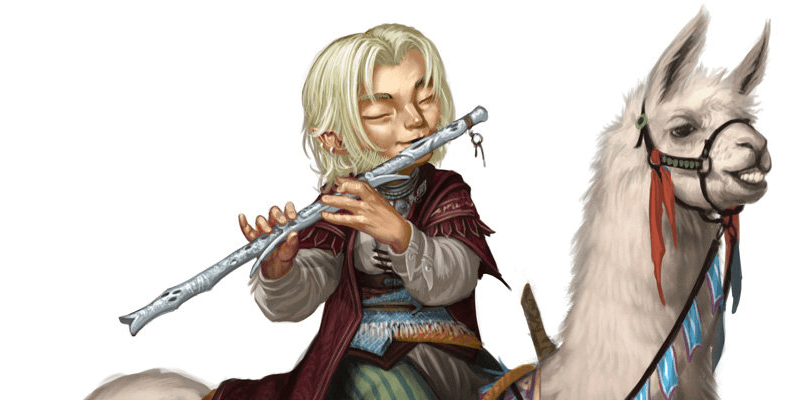The Monk Class, Part Three

As we have another week without Unearthing any Arcana, I can at last return to our discussion of the monk class in D&D. Today I’m looking at AD&D, Second Edition, and like all even-numbered editions, the monk is not a core Player’s Handbook class. I’m not really sure why, except that it was always a dodgy fit and 2e, especially in the DMG and the Complete splatbooks, shows way more Eurocentrism than any edition before or after it. (The other editions are still Eurocentric, they’re just colored with Gygaxian naturalism, American meritocratic ideas, or other media influences to a greater degree.)
Part One | Part Two | Part Three
Complete Priest’s Handbook
This is one of the few Complete splatbooks of the 2e era that I didn’t own, and I always had sort of an odd relationship with it. I’d thumb through it at the store, read its mechanics for building variant clerics for each portfolio, and bounce off, because they are universally worse than just playing a Player’s Handbook cleric… something that people already mostly did not want to do. I’m not here to talk about the cleric today, but 2e’s first iteration of the monk is the Fighting-Monk kit, which modifies the cleric class.
- In addition to the cleric’s Wis 9+ prerequisite, the Fighting-Monk requires a Dex of 12+. Still the easiest monk to qualify for that we’ve seen so far.
- There’s a whole complicated rigmarole about how to ditch this kit for another one in the course of play. Unlike 5e’s subclasses, which so resemble kits, some 2e kits explicitly expect that you’ll leave your current kit and take another at some point. This “whole complicated rigmarole” is “don’t use any of this kit’s special abilities for the next three levels. This is just unnecessarily punitive.
- They receive Tumbling as a bonus nonweapon proficiency, which is a complicated way to say that they can:
- Spend their action to dodge, improving AC by 4.
- Gain a +2 bonus to unarmed attack rolls. The paragraph layout makes this unclear, but I have to conclude that this doesn’t cost any part of an action, and is just a passive benefit.
- Reduce falling damage on falls of 60 feet or less.
- You have to have the Complete Fighter’s Handbook to know what the hell this means, but Fighting-Monks get bonus weapon proficiency slots that they use to specialize in Punching, Wrestling, or Martial Arts. Each slot spent on specialization improves attacks, damage, and choice of strike. I’m not going to go into detail here, because these rules are so bizarre and odious to me. Let’s stop at “your fixed damage winds up being comparable to the damage output of a d6, and goes up from there.”
- However, your attacks per round never scale (as a fighter’s do), because P/W/MA Specialization is not like Weapon Specialization, and you have a dire need for a very high Strength and Dexterity, since you won’t have magic weapons or any kind of armor to improve your attacks, damage, or AC.
- The Fighting-Monk treats all nonweapon proficiencies as in-class, for some reason. I guess it’s a monastic enlightenment thing?
- So about those hindrances. Did I mention no armor, ever? No armor – ever.
- The Fighting-Monk also sacrifices some breadth of spellcasting, but it’s worth mentioning that the 2e monk is still a clerical spellcaster – even if a somewhat reduced one.
- Asceticism means you can’t own more than you can carry on your back. No word on how a bag of holding might alter this limitation.
- Note the absence of an alignment requirement.
As a spellcasting class, albeit a somewhat constrained one, this monk is way out in left field compared to everything before it. It does manage to feel more like clergy than other monks, for the same reason. Anything that hangs on the mechanics of punching, wrestling, or martial arts in 2e is off to a rocky start, and the rest of the Fighting-Monk’s mechanics are… regrettable. On the other hand, we have several more efforts at a 2e monk to talk about today, so buckle up.
Faiths & Avatars
Man, I was a dedicated collector of Forgotten Realms material in the 2e and 3e eras. Faiths & Avatars covers basically what it says on the tin, and includes a bunch of extra Priest classes. (Quick reminder: in 2e, Priest is a parent class that contains cleric, druid, and monk; F&A adds crusaders, mystics, and shamans. No one’s actual character class is “priest.”) As an aside, the text of this book is particularly small and annoying to read – this was as true when I was a teenager in thick glasses as it is now that one of those descriptors has substantively changed.
- The monk requires Constitution 13+, Wisdom 15+, Intelligence 14+. Intelligence, you say. Hokay. +10% XP with Int and Wis of 16+.
- Oh, by the way, that Int score does zilch for you otherwise, and you’ll need a good Dex to survive. Good luck getting the dice to generate a monk that could survive 1st
- Must be some flavor of lawful.
- Must be human.
- Must be unarmored, but their AC scales on its own. Starting at 2nd level, anyway. Yeah, you have to make it through 1st level with 10 AC. It eventually drops to AC 2 at 14th level, which is pretty good but not amazing. Oh, and this AC doesn’t apply against unseen attacks – for that, you’re back to AC 10. Sucks to be you.
- Also, no bracers of armor for you.
- But monks treat all nonweapon proficiencies as in-class.
- They cast spells as clerics, with a sort of unusual collection of spell spheres, and only minor access to the all-important sphere of Healing. Numbers and Thought are interesting spheres, but a lot of their spells are either so corner-case that you’d never think to prepare one of these, or not worth the casting because that’s not how people play the game, but you know what, let me save this thought (that’s one of their spells, by the way) for when I write the history of the cleric series.
- No ability to turn undead.
- Monks get a special saving throw versus spells to resist detection, scrying, or mind-reading magic or psionic effects, starting at 5th level.
- At 7th level, they’re always under the effects of free action.
- Now we get into the martial arts. This is called burying the lede, y’all. The writers have no idea which set of rules for unarmed combat you might be using, and rather than write something specific to this class, there are rules for all three versions (Complete Fighter’s Handbook, Player’s Option: Combat & Tactics, and the Player’s Handbook).
- I can’t really put off talking about martial arts any longer, can I? Okay, it’s like this.
- In the PH, make an attack roll, modified by Strength. If this roll succeeds, look up the die result on a table, and that gives you your damage result (0, 1, or 2, plus your Strength modifier) and a percentage chance to stun the target for 1d10 rounds. 25% of this damage is real and 75% is temporary. Wrestling is more complicated and offers cumulative damage, but no stun chance.
- In the CFH, they add martial arts and ever greater levels of specialization in each type of unarmed combat. Martial arts is for the most part like punching but with slightly better damage and stun chances, but you take brutal penalties to your attack roll for wearing any kind of armor. Specializing in each style adds 1 to your attack roll, 1 to your damage roll, and lets you shift your strike result up or down the chart by a range of 1 point. Also, punching and martial arts specialization grant one extra attack per round, so that’s almost good. You’re basically here for that stun chance. As you continue boosting your specialization, your attack bonus, damage bonus, and shift range on your strike result grow by 1 per slot spent.
- In PO:CT, they throw all of this business out the window and shift to traditional attack and damage rolls for pummeling (the new punching), but with a bunch of extra rules for knockdowns and six tiers of specialization. The wrestling rules are four pages long, and I’ll have to hope that that’s a sufficient condemnation. There are also overbearing rules, which they could have just called Tackling rules; these take two and a half pages. Finally we come to martial arts. There are four styles, named A, B, C, and D, each with unique features and base damage dice. The various levels of martial arts specialization grant more attacks per round, avert penalties to various actions, and allow attacks of opportunity, among other things.
- If you’re still with me through all that, God bless you. The long and the short of it is that monks are good at this stuff – as good as the single-classed warrior that the PO:CT rules otherwise privilege highly. Whether or not that’s worth anything depends entirely on which set of rules you’re using. Your DM will probably not thank you for making them learn your unarmed-combat rules, because even the “fast” one is a lot more complicated to resolve than a fighter’s attacks.
- Monks can use any bludgeoning weapon.
The monk class of Player’s Option: Spells & Magic is a reprint of the F&A monk, in case you’re wondering. What I see here is in line with most of what the descriptive text promises: a jack of all trades, master of none. What it doesn’t do is any of the infiltration that it promises (no stealth or improved perception), and I hope you’re really into shining in rare moments, because your spell list doesn’t want to do you a ton of favors for meat-and-potatoes spells.
Baldur’s Gate: Enhanced Edition
I wouldn’t even have known about this one, but for the efforts of an alert reader. Yeah, I’m drawing on a video game for a 2e class.
- Must have a Wisdom of 9+ (they’re still clerics), as well as Dexterity and Constitution of 9+. Isn’t it nice to see a class you might actually be able to play without the DM knowing you cheat?
- Must be some flavor of lawful.
- They advance as clerics (in XP and HD) and use some clerical magic items.
- They use thief weapons and pick up Hide in Shadows and Move Silently skills. They can detect traps, but not do anything about them. The thief weapon selection doesn’t suck.
- Their THAC0 (attack bonus, if you don’t speak 2e) and High Level Abilities work like Fighters.
- They can deliver a stunning blow.
- They gain a Quivering Palm attack once per day, starting at 13th level.
- They can lay on hands to heal damage, exactly like a paladin, starting at 7th level.
- I’m immensely amused that the video game designers dumped the stinginess of earlier edition monk healing features – they were apparently more aware than D&D’s designers that paltry healing per day is just not satisfying or meaningful to use.
- Their AC scales downward about like you’d expect, and they have a further AC improvement against missiles.
- They gain a bonus on all saving throws.
- They become immune to disease, haste, and slow at 5th level, charm at 9th level, poison at 11th level, and nonmagical weapons at 20th level.
- They gain a scaling bonus to movement speed.
- Their unarmed attack damage scales up. A lot. It starts at 1d6, reaching 1d20+4 at 25th level.
- They gain a scaling Magic Resistance percentage, starting at 14th level.
It’s hard to miss that this is a best-parts version of years of tinkering (BG:EE came out in 2014), at least when it comes to theme. Porting it back into a more “pure” 2e is prohibitive, as it substantially outclasses most anything else in the core game; as far as I see, the only serious issue is surviving long enough to get your AC to improve. I haven’t played BG:EE, so I don’t know how the monk stacks up against other classes in its own environment.
The Scarlet Brotherhood
There is one more official 2e monk writeup out there, in The Scarlet Brotherhood, but as the hour is late and the article already extensive (and covering TSB’s version would greatly expand that), I’ll simply say that it is one of the only versions to draw on Philip Meyers’s monk from Dragon #53, and the presentation of class features visibly presages 3.0 – The Scarlet Brotherhood came out in 1999, and its creative team is well-known to any 3.x or Pathfinder fan.
One striking note here is that this class is specifically for Suel humans of the Scarlet Brotherhood, and they must be lawful evil – suddenly the high-level progression duels make a lot more sense. Overall, and in contrast with everything else in this article, TSB’s version draws deeply from all of OD&D’s and 1e’s monks, even when those mechanics don’t make a ton of sense. In so many ways, this is the only 2e-era through-line successor to earlier monk classes.
Taking all of these versions together, what I see is a clash of ideas around the monk’s nature and how to fit it into D&D settings. Some versions invoke its precursors and reject trying to fit, while others draw in Western contemplative mystics and imagine them as still stranger unarmed warriors. The Scarlet Brotherhood is the thematic success of the bunch, as it folds monks deeply into setting lore and lets interesting ideas sprout out of that – a model that 3.0 Forgotten Realms will make every attempt to duplicate, with what I (spoiler!) regard as mixed results.



